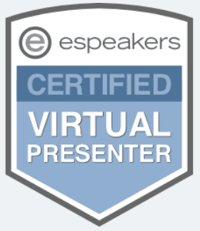When every conversation counts, knowing who to focus on and when to focus on them is a force multiplier.
Who cares about who gets your next five minutes? Identifying which relationships are worth investing in, when to follow up and why, who's ready for meaningful engagement, and how to identify patterns will make moving decisions forward much easier.
It is the skill that multiplies revenue. And you aren’t solving for it.
Your Problem Isn’t Being Solved
Most sales tools or training focus on research, the sales process, and messaging. They help you create more stuff—emails, decks, sequences. That’s useful, but it misses the bigger problem.
Prioritization.
List builders, enrichment tools, and intent signals are overhyped. The data can be misleading and inaccurate, especially for more sophisticated B2B offerings. Tracking who clicked a blog or watched a video just isn't enough. It doesn’t tell if someone is a good fit, help you identify where they are in your pipeline, and shouldn't trigger an automation.
You need a way to take what you’re learning, what people say, and how they act, and use it to inform how you prioritize every lead and relationship. That’s where the real leverage is.
This doesn’t even account for the fact that most of these sales tools aren’t designed for sophisticated sellers. In general, they are inherently designed for volume sales. They sell on a number, not the outcome. If you need any expertise or customization to use them, it is not feasible for you to do this yourself. LinkedIn Sales Navigator, in theory, should be the one tool that solves this problem. But it doesn’t because it lacks ease of use and intuitiveness for the sellers.
The Real Cognitive Load
It takes real mental energy to be great at prioritization. You evaluate fit, gauge readiness, track multiple stakeholders, and try to remember what worked in similar situations. That's demanding enough, but it becomes impossible when you're also delivering services, running a business, or leading a team.
Founders, seller-doers, and sales professionals all deal with this. And most don’t have a great system. They either go with their gut or chase whatever feels hot. That might get you by, but it’s not sustainable.
Elite sellers are exceptional at deciding who to sell to and when. That’s the difference.
The Compound Effect of Getting It Right
When you’re good at prioritizing, everything gets or seems easier.
You show up more prepared. Your pitch lands better. You stop chasing bad fits. You stop guessing where someone is in the process.
You can adjust based on who you’re talking to. You pick up on patterns. You hear the same triggers, commonalities between prospects, and while it sounds dumb, it does look a lot less like selling and more like the prospects buying.
This doesn’t just help you close faster. It helps you follow up smarter. It helps you stay in control of your time. And the benefits build on each other. Every small improvement stacks up. That’s how progress happens.
Why Tools Alone Won’t Fix It
Many people want a clean answer: buy the right software and plug it in. I always talk about the promise of generative AI not meeting where people want it to be. Everyone wants an easy button.
But that’s not how this works. You wouldn't need you if a tool could tell you who to call, when, what to say, and how to say it. The whole job would be automated. This would be great, in theory, for the founder or seller/doer, but not as much for the sales professional.
That’s not happening anytime soon. And when AI gets to that point, if it does, it won’t be something you use; it’ll replace you and many other areas of the business, or the entire business.
The real opportunity is now, while tools can support your judgment instead of replacing it. You can use them to:
- Build lead and account scoring that fits your actual sales motion
- Track pipeline signals in a way crm’s and spreadsheets can’t
- Spot patterns you don’t have time to notice
- Learn from your signals and refine over time
That’s where the value is, not in general automation but clarity.
Building a Sustainable System
None of this matters if you don’t have enough repetitions. Enough conversations. Enough activity to build real insight.
And that’s hard.
If you’re juggling other roles, it’s tough to create volume. If you’re deep in quota pressure, you don’t always stop to learn. But if you don’t have enough data points, you’re just guessing.
You might invest weeks in five promising conversations that go nowhere and think, "This approach isn't working." But even with high-ticket offerings, five data points aren't enough to spot real patterns.
That’s why tracking matters. That’s why having or using a system will vastly improve you. You can’t improve what you don’t reflect on.
Better data. Incredible analysis. Smarter decisions. That’s what makes prioritization work.
The Quiet Advantage
This isn't about flashy tools or being perfect at everything you do. It's about getting better at what matters most, knowing which relationships deserve your deepest investment.
Sellers who master this don't just win more deals; they build stronger practices. They spend their energy on opportunities that matter. They develop relationships that compound over time. And they do it without the constant drain of chasing every possible lead.
That's the difference between struggling to hit numbers and building something sustainable. It's not about working harder. It's about choosing better.




